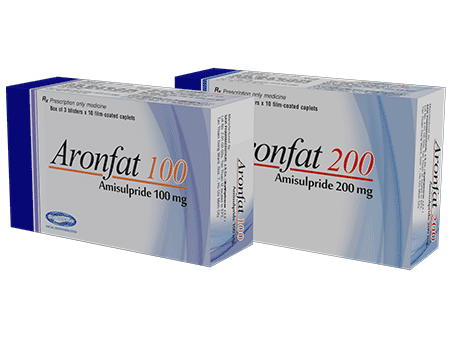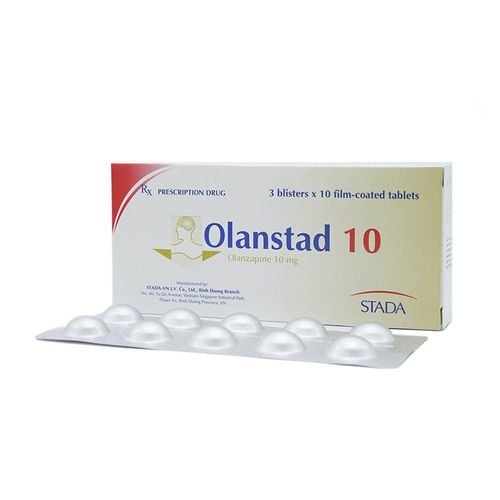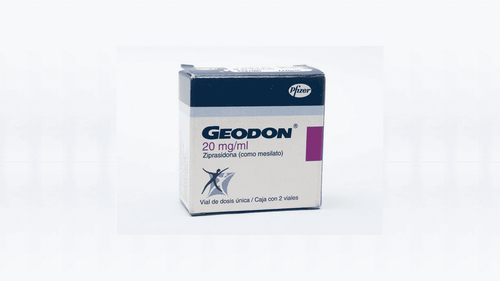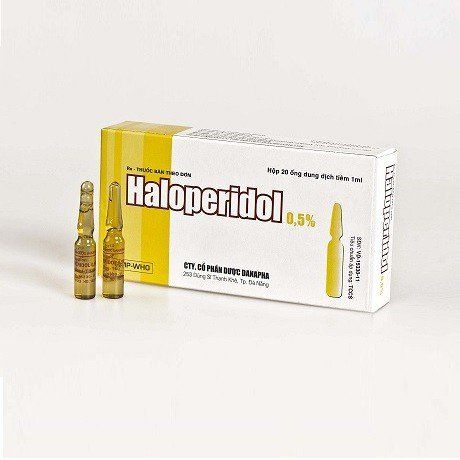This is an automatically translated article.
Sulpistad drug has the main ingredient Amisulprid, the drug is used to treat mental illnesses for patients such as: Acute schizophrenia, delusional disease, thought disorder, ... Here are some information Useful and necessary information about the drug Sulpistad helps patients consult before using the drug safely and effectively.
1. What is Sulpistad?
Sulpistad drug is a drug belonging to the group of psychotropic drugs, manufactured in the form of tablets. Sulpistad is packaged in boxes of 3 blisters x 10 tablets and boxes of 6 blisters x 10 tablets.
Sulpistad 100 has the main ingredient Amisulprid 100mg and some other excipients, just enough for 1 tablet. Sulpistad 200 has the main ingredient Amisulprid 200mg and some other excipients, just enough for 1 tablet. Sulpistad 400 has the main ingredient Amisulprid 400mg and some other excipients, just enough for 1 tablet.
2. What are the uses of Sulpistad?
Sulpistad is indicated for the treatment of patients in the following cases:
Amisulprid is indicated for the treatment of acute schizophrenia. Treatment of chronic schizophrenia with symptoms such as: delusions, hallucinations, thought disorders,... Treatment of schizophrenia with negative symptoms such as: Withdrawal from social life, bizarre and inappropriate locomotion,...
3. Dosage - How to take Sulpistad
3.1. How to use the drug Sulpistad is made in the form of tablets and is used orally, according to tablets.
3.2. Dosage The dose of Sulpistad drug depends on each patient and the course of the disease, there will be an appropriate dose. Below is the reference dose of Sulpistad as follows:
Patients with acute psychosis: Use Sulpistad 400mg - 800mg per day. The dose can be adjusted according to the patient's response, in some cases, the patient can increase the dose up to 1200mg/day. When using effective treatment, Sulpistad should be maintained at the lowest dose. Dosage adjustment of Sulpistad is necessary for patients with both negative and positive schizophrenia symptoms for optimal control of positive symptoms. In case the patient has mainly negative symptoms, the dose should be in the range of 50-300mg/day. Usage: With a dose of 300mg/day Sulpistad or less, patients take it once a day. For doses above 300mg/day, it should be divided into 2 times a day. For patients with renal failure: In case the patient has a creatinine clearance of about 30-60 ml/min, the dose used is Sulpistad 150mg/day (ie 1/2 dose). If the patient has a creatinine clearance of about 10-30 ml/min, the dose is Sulpistad 100mg/day (ie 1/3 dose).
4. What to do when taking an overdose of Sulpistad
Patients when using Sulpistad overdose will have accompanying symptoms such as: People feel somnolence, coma, hypotension and extrapyramidal symptoms.
There is practically no specific antidote. It is necessary to monitor the patient in case of drug overdose to give appropriate support and support measures. In the case of patients with severe extrapyramidal symptoms, anticholinergic drugs should be used.
5. Contraindications of Sulpistad
Here is a case where a patient is not allowed to use Sulpistad drug to treat the following disease:
Sulpistad drug is not used for patients with hypersensitivity or history of allergy to Amisulpride and other excipients contained in the drug. Do not use Amisulprid for patients with prolactin-dependent tumors such as: breast cancer, pituitary prolactin tumors. Do not use the drug in patients with pheochromocytoma. Amisulpride should be avoided in children <15 years of age. Do not use the drug for pregnant and lactating women. Do not use Amisulpride in combination with the following drugs: Quinidin, Disopyramid, Procainamide, Amiodarone, Sotalol, Bepridil, Cisaprid, Sultoprid, Thioridazine, Intravenous Erythromycin, Intravenous Vincamine, Halofantrin, Pentamidine, Sparfloxacin, Levodopa. Because that will cause torsades de pointes for the patient, which is dangerous.
6. Sulpistad drug interactions
There have been reports of contraindications to the combination of Sulpistad drug with the following drugs:
Do not use Sulpistad in combination with class Ia antiarrhythmic drugs such as: Quinidine, Disopyramid, Procainamide. Sulpistad is not combined with class III antiarrhythmic drugs such as Amiodaron, Sotalol. Not to be used in combination with drugs such as: Bepridil, Cisaprid, Sultoprid, Thioridazine, Intravenous Erythromycin, Intravenous Vincamine, Halofantrin, Pentamidine, Sparfloxacin. When using the drug Sulpistad to treat the disease should not be used in combination with the drug Levodopa. While taking the drug, the patient should not drink alcohol. Because Amisulpride will increase the effect of alcohol on the central nervous system. Caution should be exercised when sulpistad is combined with drugs that increase the risk of torsade de pointes. Drugs that slow the heart rate such as: Beta blockers, calcium channel blockers such as Diltiazem, Verapamil, Clonidine, Guanfacin, Digitalis. Drugs causing hypokalemia such as: Diuretics that lower blood potassium, stimulant laxatives, intravenous amphotericin B, Glucocorticoids, Tetracosatid. Neuroleptic drugs such as: Pimozid, Haloperidol, Imipramine, Lithium. Patients who are taking Sulpistad should be considered when combining with the following drugs: CNS depressants (H1-antihistamines cause drowsiness, sedatives, anesthetics, analgesics, other drugs). other anti-anxiety drugs, barbiturates, benzodiazepines), antihypertensives, and dopamine agonists (such as levodopa). Because these groups of drugs will reduce the effect of Amisulpride.
7. What side effects does Sulpistad cause?
During the use of Sulpistad, patients may experience some unwanted side effects such as:
Common effects:
Insomnia. Concerned. Excitement. Uncommon effects:
Somnolence. Constipation, diarrhea, nausea, vomiting Dry mouth. Other undesirable effects:
Increased plasma prolactin. Weight gain. Acute dystonia such as: Neck curvature, eye rotation, jaw tightness. Extrapyramidal symptoms: Increased salivation, tremor, decreased movement, restlessness. Tardive dyskinesia. Decreased blood pressure, prolongation of QT interval, bradycardia. Allergic reactions, increased liver enzymes, neuroleptic malignant syndrome (very rare). Usually, the side effects of the drug occur will be gradually reduced and disappear when the patient stops taking Sulpistad. But if you see one of these unwanted side effects, you need to notify your doctor or medical facility for timely intervention and improvement.
8. Precautions when using Sulpistad
In the course of using Sulpistad to treat patients, the following things should be noted:
When using the drug, all psychotropic drugs must be stopped if a neuroleptic malignant syndrome occurs such as: Fever high, muscle stiffness, instability, increased CPK,... Especially in the case of high fever when using high doses of the drug. Sulpistad should be used with caution in patients with a history of seizures. Because the ingredient Amisulpride in the drug will lower the seizure threshold. For Parkinson's patients, use Sulpistad only when absolutely necessary. Because the drug will make Parkinson's disease worse. In case the patient's condition wants to stop using the drug, it is necessary to reduce the dose gradually, avoiding abrupt discontinuation. For patients with bradycardia <55 beats/min, hypokalemia, congenital prolongation of the QT interval. Care should be taken when using the drug because Amisulpride will prolong the QT interval, potentially causing severe ventricular arrhythmias such as torsades de pointes in patients. Care should be taken when using the drug for patients who are driving or operating machinery. Because Amisulpride affects reflexes, the ability to drive and use machines may be affected. Take care to keep the medicine out of reach of children. Note: Sulpistad is a drug prescribed by a doctor, patients do not arbitrarily use Sulpistad.













